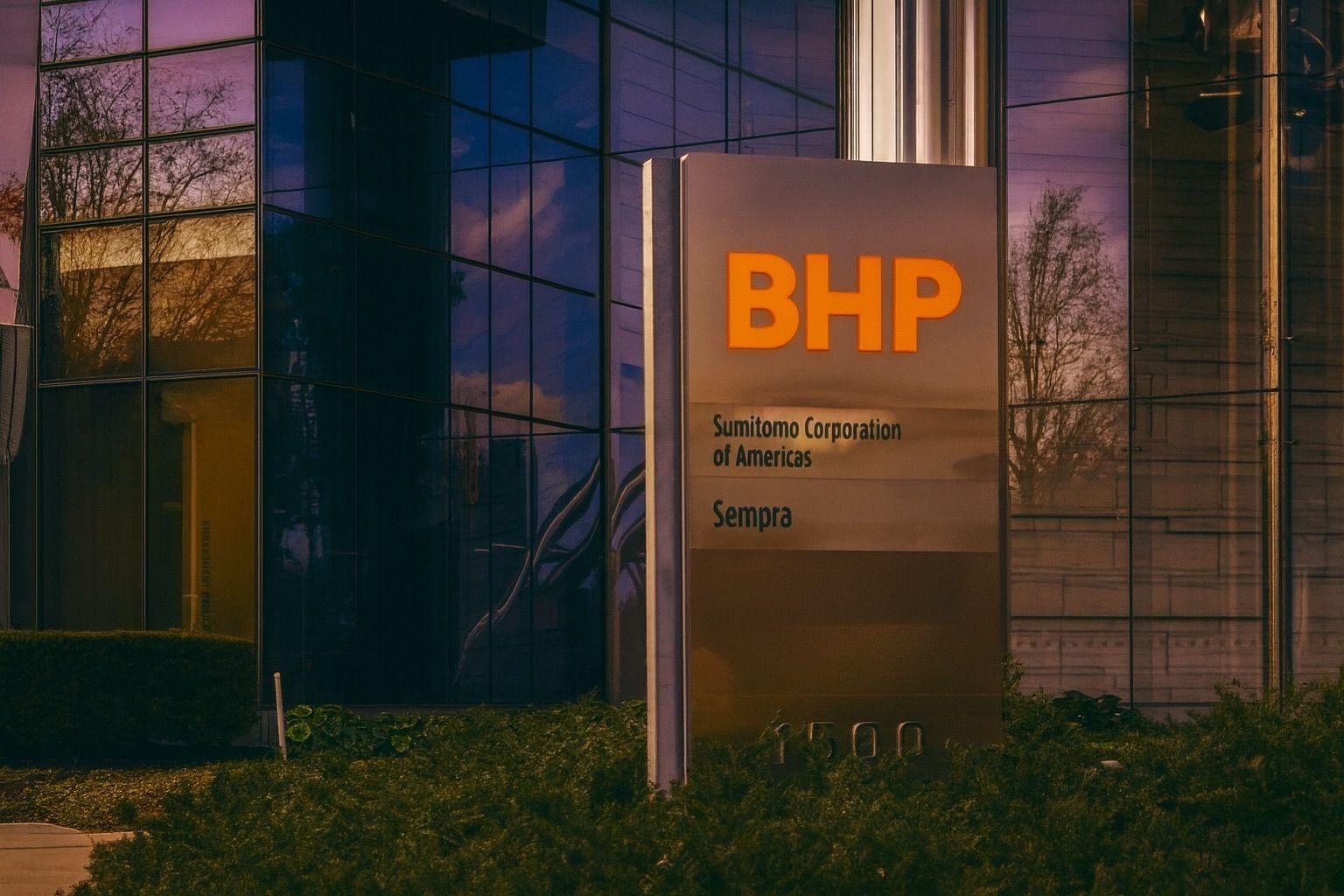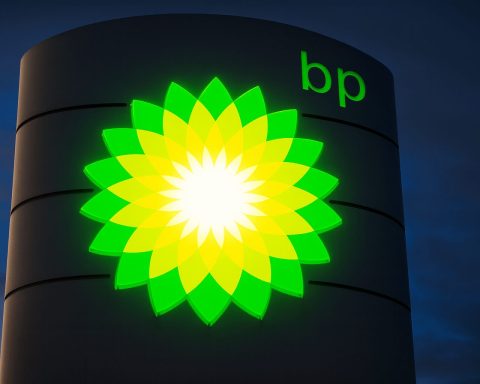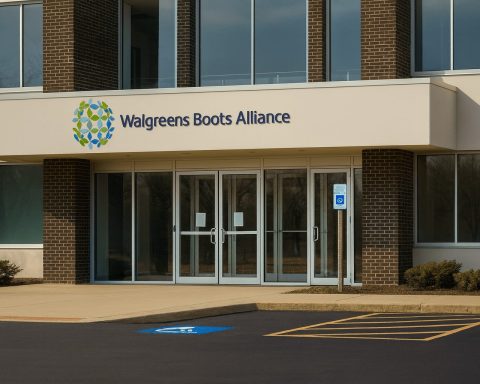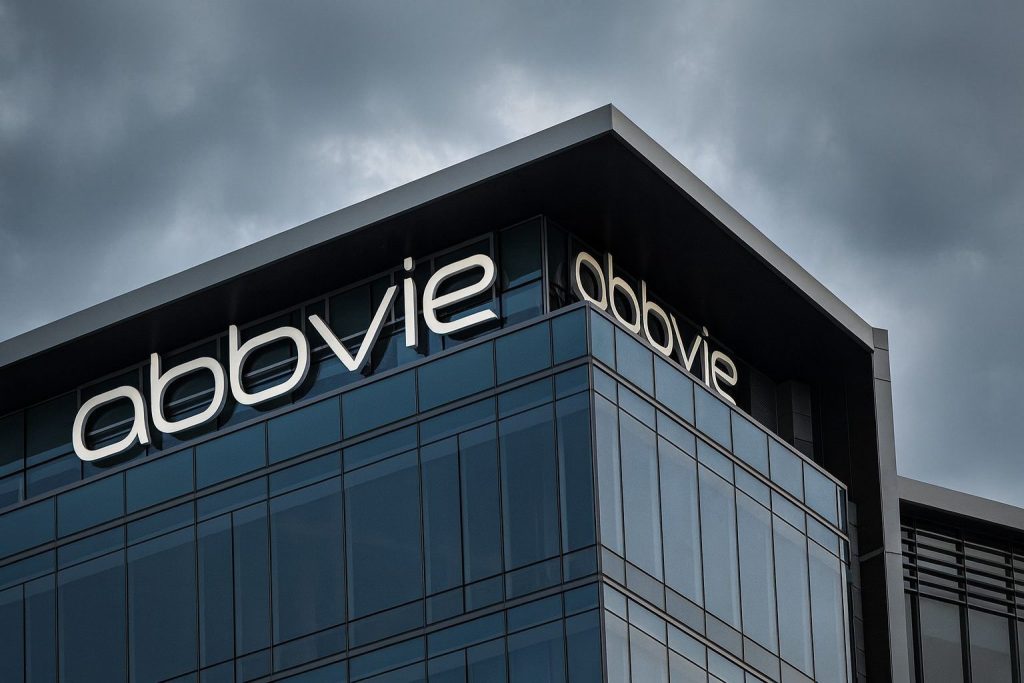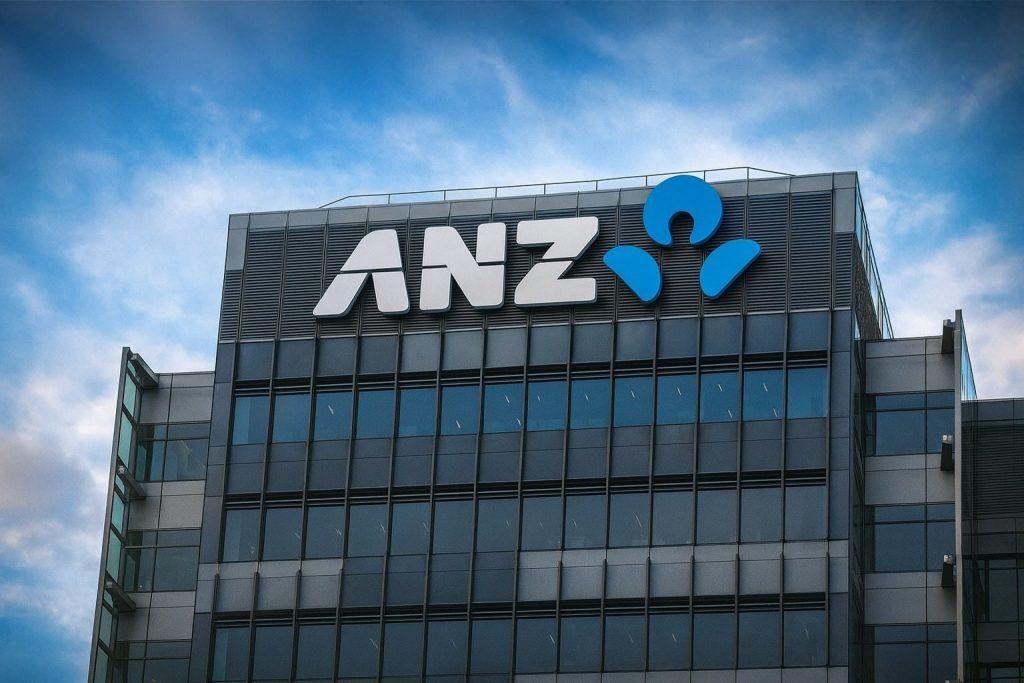As the ASX prepares to open on Monday, 24 November 2025, BHP Group Ltd (ASX:BHP, NYSE:BHP, LSE:BHP) is sitting at the centre of several big stories: a fresh takeover tilt at Anglo American, an escalating iron ore pricing dispute with China’s state buyer, a landmark court ruling over the 2015 Fundão dam disaster, and a busy pipeline of copper and potash growth projects.
Here’s a clear rundown of what matters for BHP shareholders and traders before the bell.
1. Where the BHP share price stands heading into Monday
On Friday, BHP shares on the ASX closed at A$40.37, down about 5.6% over the past week but still roughly 2.2% higher year-to-date in 2025. [1]
- Over the current financial year (FY26, starting 1 July 2025), BHP is up just over 10%, highlighting a strong start despite recent volatility. [2]
- In New York, BHP’s ADRs last closed at US$53.08, modestly higher on the day, giving the miner a market value in the region of US$130 billion. [3]
That share-price wobble in November has been driven mainly by legal and geopolitical headlines rather than operational weakness.
2. Samarco / Fundão dam ruling: the big new overhang
On 14 November 2025, the English High Court found BHP liable under Brazilian law for the 2015 Fundão tailings dam failure at the Samarco joint venture in Brazil, in proceedings brought by more than 600,000 claimants in the UK. [4]
Key points from BHP’s own update:
- The court held BHP liable as a “polluter” under Brazilian environmental law and also at fault under the Brazilian civil code, while rejecting arguments based on Brazilian corporate law. [5]
- The ruling confirms liability but does not yet set damages. That will be determined in second and third‑stage trials currently expected from 2026 through to potentially 2029. [6]
- BHP says it intends to appeal and will continue to defend the UK group action. [7]
- More than 610,000 people have already been compensated in Brazil, including around 240,000 claimants from the UK group who signed releases. The High Court upheld these releases, which should reduce the size and value of the UK claims. [8]
On the financial side:
- At 30 June 2025 BHP carried a US$5.8 billion provision related to its obligations under the Brazil agreement. [9]
- After spending around US$1 billion between July and October and reassessing obligations, BHP now estimates an aggregate provision of US$5.5 billion at 31 October 2025, incorporating the High Court decision. [10]
- Expected cash outflows linked to Samarco remain around US$2.2 billion in FY26 and US$0.5 billion in FY27, in line with previous guidance. [11]
BHP also warns that actual outcomes could be materially higher or lower than currently provided, leaving investors facing a multi‑year legal and financial uncertainty. [12]
Market reaction has been swift: Australian media and broker commentary note that BHP shares sold off in mid‑single digits following the ruling, as investors recalibrated legal risk and the potential impact on future capital returns. [13]
3. Stand‑off with China’s state iron ore buyer
At the same time, BHP is caught in a high‑stakes pricing dispute with China Mineral Resources Group (CMRG), the state-backed iron ore buyer created to strengthen Beijing’s hand with major miners.
Recent developments:
- Since September 2025, CMRG has told Chinese mills to halt purchases of BHP’s Jimblebar Blend Fines amid negotiations over 2026 supply contracts. [14]
- The stand‑off has now widened: CMRG has reportedly asked mills to stop buying BHP’s Jinbao product as well, deepening the ban on certain BHP iron ore fines. [15]
- Buyers have pivoted to Rio Tinto’s Pilbara Blend Fines, pulling those portside stocks down about 40% to 6.5 million tonnes, while Jimblebar inventories have surged. [16]
- Despite the product bans, BHP’s overall shipments from Port Hedland remain robust, with exports up around 8.5% year‑on‑year in October, suggesting the dispute is more about pricing terms and currency than volume restrictions at the port level. [17]
Key negotiation flashpoints include:
- CMRG’s push for renminbi‑denominated contracts,
- how closely prices track international indices, and
- adjustments for freight and ore quality. [18]
For now, the stand‑off has produced a strange mix of weak demand but firm prices:
- Benchmark 62% CFR iron ore futures are trading around US$104 per tonne, broadly range‑bound in recent weeks but up modestly year‑to‑date. [19]
- Chinese steel output and domestic consumption have fallen in 2025, leaving many mills barely profitable, yet supply disruptions and restocking have kept ore prices surprisingly resilient. [20]
For BHP, the risk is two‑sided: prolonged contract wrangling could erode pricing power and relationships in its single biggest market, but the squeeze on competing products may also help support headline iron ore prices in the short term.
4. Operations: solid Q1 FY26 start, copper leading the way
Operationally, BHP’s first quarter of FY26 (three months to 30 September 2025) was reassuring.
Highlights from the Q1 Operational Review: [21]
- Copper
- Group copper production rose 4% quarter‑on‑quarter, driven by higher concentrator throughput at Escondida in Chile and strong performance at Copper South Australia.
- FY26 copper production guidance remains 1,800–2,000 kilotonnes, underscoring copper’s growing centrality to BHP’s earnings mix.
- Iron ore (WAIO)
- BHP’s Western Australia Iron Ore business delivered record Q1 material mined, while completing key infrastructure upgrades ahead of schedule.
- Total iron ore production for the quarter was about 64 million tonnes; Reuters reports this is roughly 1% lower than the same quarter a year earlier, reflecting planned maintenance. [22]
- Steelmaking coal (BMA)
- Production at BHP Mitsubishi Alliance operations increased around 8% in the quarter, supported by strong stripping performance and improved mining rates at Broadmeadow. [23]
- Balance sheet
- BHP issued €1.4 billion and US$1.5 billion of bonds and refinanced US$5.5 billion in revolving credit facilities during the quarter, highlighting continued access to low‑cost funding. [24]
Overall, management described FY26 as having made a “strong start”, with BHP on track to deliver full‑year guidance and progressing its growth pipeline across Australia and the Americas. [25]
5. Growth projects: Olympic Dam, Jansen potash and portfolio reshaping
Olympic Dam (Copper, Gold, Uranium – South Australia)
BHP is doubling down on copper, earmarking over A$840 million (around US$555 million) for a series of growth‑enabling projects at its Olympic Dam complex. [26]
The investment will fund:
- a new underground access decline,
- expanded ore pass capacity,
- a new backfill system, and
- an oxygen plant to lift smelter efficiency. [27]
BHP is working towards a final investment decision on a larger smelter and refinery expansion by mid‑2027, with an ambition to roughly double copper output in South Australia to about 650,000 tonnes per year by the mid‑2030s. [28]
Jansen Potash (Canada)
Potash remains a long‑dated growth pillar:
- BHP has previously flagged a US$1.7 billion cost overrun and delay at its Jansen project, even as it continues to highlight attractive long‑term potash fundamentals. [29]
- Benchmark muriate of potash spot prices sit around US$352 per tonne, roughly 27% higher than a year ago, illustrating both demand strength and price volatility. [30]
Coal rationalisation: Saraji South closure
In contrast to its copper and potash push, BHP is trimming exposure to higher‑cost coal:
- The company plans to suspend operations and cut around 750 jobs at the Saraji South coking coal mine in Queensland, placing the asset into care and maintenance from November 2025. [31]
- BHP has pointed to low coal prices and elevated Queensland royalties as key reasons, reinforcing its message that capital will be focused on higher‑margin, future‑facing commodities.
6. M&A watch: renewed Anglo American bid could reshape BHP
The other major narrative into Monday’s open is deal‑making.
Multiple reports from Reuters and the Financial Times say BHP has made a renewed takeover approach to Anglo American, aiming to break up or derail Anglo’s planned US$57 billion all‑share merger with Teck Resources. [32]
Key context:
- BHP scrapped a prior US$49 billion offer for Anglo in 2024 after strong board and political pushback, including concerns around proposed South African asset divestments. [33]
- Anglo’s shares have soared on the back of its radical restructuring and the Teck deal, leaving BHP’s own stock down about 20% over two years, which complicates any new share‑based offer. [34]
- A successful combination of BHP and Anglo would create the world’s largest copper producer, a strategic prize as copper demand grows with the global energy transition. [35]
Investors will be watching for:
- Whether BHP confirms a formal proposal in coming days.
- Any hints that BHP is willing to raise leverage further beyond its already‑higher US$10–20 billion net debt target, which the company set this year to support growth and acquisitions. [36]
- How ratings agencies and shareholders react to the prospect of a mega‑deal layered on top of Samarco liabilities.
7. Leadership transition: Geraldine Slattery tipped as next CEO
BHP’s strategic direction could also be influenced by an impending leadership handover.
Several outlets, including Reuters, Mining.com and other financial media, report that BHP’s board is likely to appoint Geraldine Slattery, current president of its Australia operations, as the company’s first female chief executive in its 140‑year history. [37]
According to these reports:
- Current CEO Mike Henry is expected to step down by mid‑2026, after roughly five years in the top job. [38]
- The board is said to favour strategic continuity, with Slattery widely seen as aligned with Henry’s focus on safety, capital discipline and future‑facing commodities. [39]
BHP has not formally confirmed the appointment and has reportedly told media the board is “not in a rush” to make a change, so this remains well‑sourced but unofficial. [40]
Still, any announcement or fresh leaks about the CEO transition could move the stock, especially in the context of a large possible acquisition and sensitive negotiations with China.
8. Earnings, balance sheet and dividends: plenty of firepower, less headroom
FY25 results in brief
For the year to 30 June 2025, BHP reported:
- Underlying profit of about US$10.2 billion, its lowest in five years and down 26% from the prior year, primarily on weaker iron ore and coal prices. [41]
- Revenue down roughly 8% to US$51.3 billion. [42]
- A total FY25 dividend of US$1.10 per share (US$0.50 interim, US$0.60 final), its smallest annual payout since 2017, though still a meaningful yield at current share prices. [43]
On capital structure:
- BHP has lifted its net debt target range to US$10–20 billion, signaling a willingness to carry more leverage to fund growth and acquisitions while still claiming balance‑sheet strength. [44]
Analyst sentiment
Broker commentary has turned more cautious after the FY25 result and recent legal news:
- A recent Citi note reportedly downgraded BHP from Buy to Neutral with a price target around A$43, arguing that the risk‑reward has become more balanced given iron ore uncertainty, higher debt ambitions and legal overhangs. [45]
From a valuation lens, BHP still trades as a quality cyclical with strong assets, but the room for upside may depend on:
- how quickly copper growth translates to earnings,
- whether iron ore prices remain above US$100/t, and
- how large the ultimate Samarco bill proves to be.
9. Key things to watch before the 24 November 2025 open
If you’re holding or trading BHP shares on Monday morning, these are the main dials to keep an eye on:
- Overnight leads from BHP’s NYSE listing and commodities
- Where BHP’s ADRs trade in the US session relative to US$53.08.
- Moves in iron ore futures (Dalian / Singapore) around the US$104/t mark and copper prices, which are hovering near US$10,700 per tonne (~US$5/lb). [46]
- Fresh headlines on the Anglo American approach
- Any confirmation, pricing detail or regulatory commentary on BHP’s renewed takeover approach to Anglo American or on Anglo’s own merger plans with Teck. [47]
- Updates on the China iron ore dispute
- Statements from BHP, CMRG or Chinese steel associations that might suggest a thaw — or escalation — in the Jimblebar/Jinbao bans and contract negotiations. [48]
- Legal commentary and provisioning for Samarco
- Any new analyst estimates or BHP disclosures on potential damages ranges following the High Court’s liability ruling, and whether the US$5.5 billion provision is likely to move again in the February 2026 half‑year results. [49]
- Macro data from China
- New readings on Chinese steel production, property activity or stimulus measures that could influence demand for steelmaking materials and copper — the two pillars of BHP’s business. [50]
- CEO succession chatter
- Any further confirmation or denial around Geraldine Slattery’s expected promotion to CEO and a firm timeline for Mike Henry’s departure. [51]
- Technical levels on the ASX
- Friday’s close at A$40.37 lines up with a modestly positive year‑to‑date return; a decisive break below A$40 could signal investors are de‑risking on legal and China news, while a bounce might indicate confidence in copper‑led growth and M&A optionality. [52]
Final word
BHP heads into the 24 November 2025 session with operational momentum and a strong project pipeline, but also more moving parts than usual: a huge class‑action overhang, a tense standoff with China’s iron ore buyer, and a potential sector‑defining copper consolidation.
For long‑term investors, the key question is whether BHP’s shift toward copper and potash and its scale advantage justify taking on higher legal and geopolitical risk. For short‑term traders, Monday’s open will likely hinge on overnight commodity moves and fresh Anglo / Samarco headlines.
This article is for information only and does not constitute financial advice. Always consider your own objectives and seek professional guidance before making investment decisions.
References
1. www.intelligentinvestor.com.au, 2. www.intelligentinvestor.com.au, 3. www.reuters.com, 4. www.bhp.com, 5. www.bhp.com, 6. www.bhp.com, 7. www.bhp.com, 8. www.bhp.com, 9. www.ft.com, 10. www.bhp.com, 11. www.bhp.com, 12. www.bhp.com, 13. finance.yahoo.com, 14. www.reuters.com, 15. www.theaustralian.com.au, 16. www.reuters.com, 17. www.theaustralian.com.au, 18. www.theaustralian.com.au, 19. tradingeconomics.com, 20. www.reuters.com, 21. www.bhp.com, 22. www.rttnews.com, 23. www.bhp.com, 24. www.bhp.com, 25. www.bhp.com, 26. www.reuters.com, 27. www.reuters.com, 28. www.reuters.com, 29. www.reuters.com, 30. ycharts.com, 31. www.reuters.com, 32. www.reuters.com, 33. www.ft.com, 34. www.ft.com, 35. www.reuters.com, 36. www.reuters.com, 37. www.reuters.com, 38. m.economictimes.com, 39. www.mining.com, 40. www.reuters.com, 41. www.reuters.com, 42. www.ft.com, 43. www.bhp.com, 44. www.reuters.com, 45. finance.yahoo.com, 46. tradingeconomics.com, 47. www.reuters.com, 48. www.reuters.com, 49. www.bhp.com, 50. www.reuters.com, 51. www.reuters.com, 52. www.intelligentinvestor.com.au
